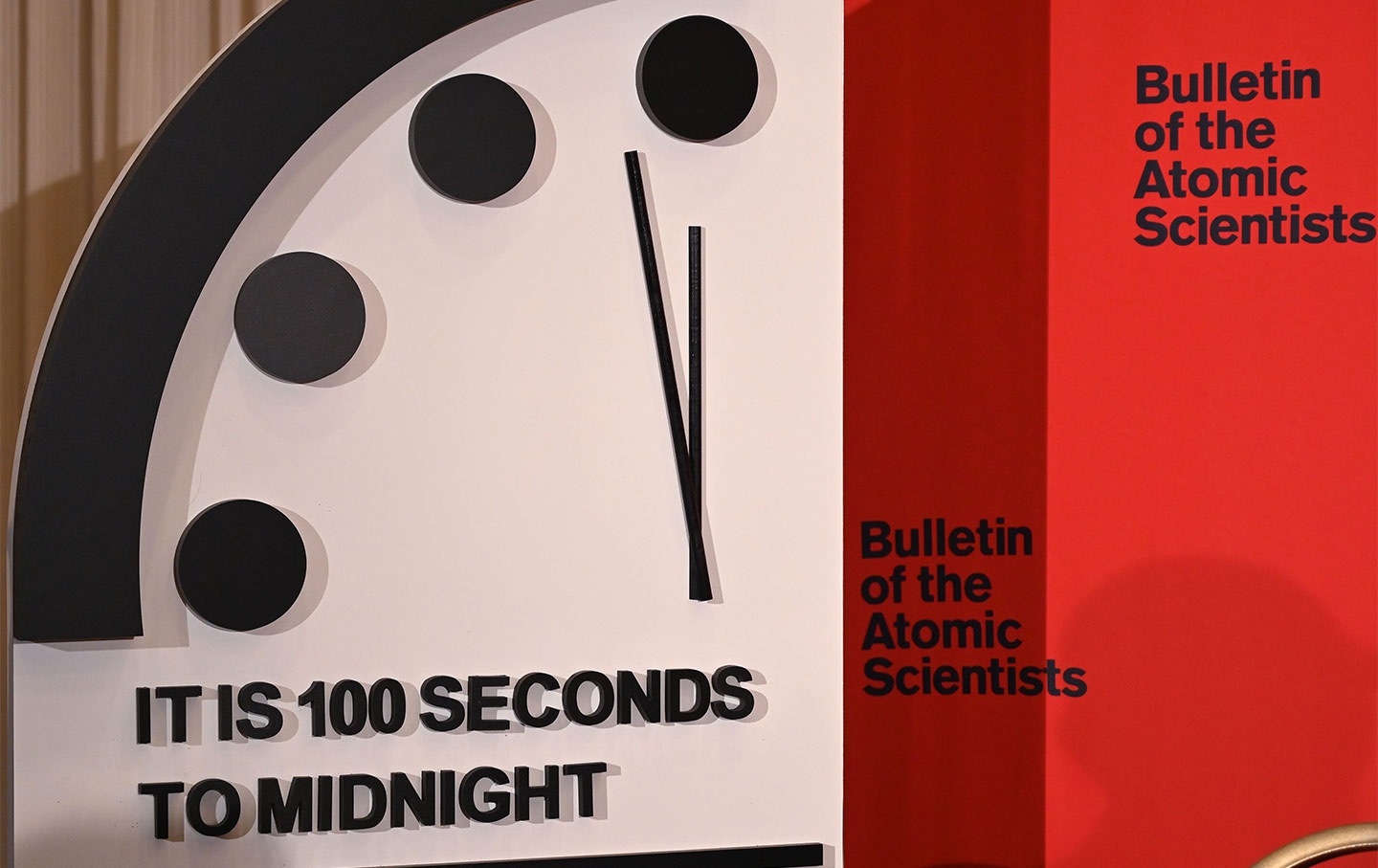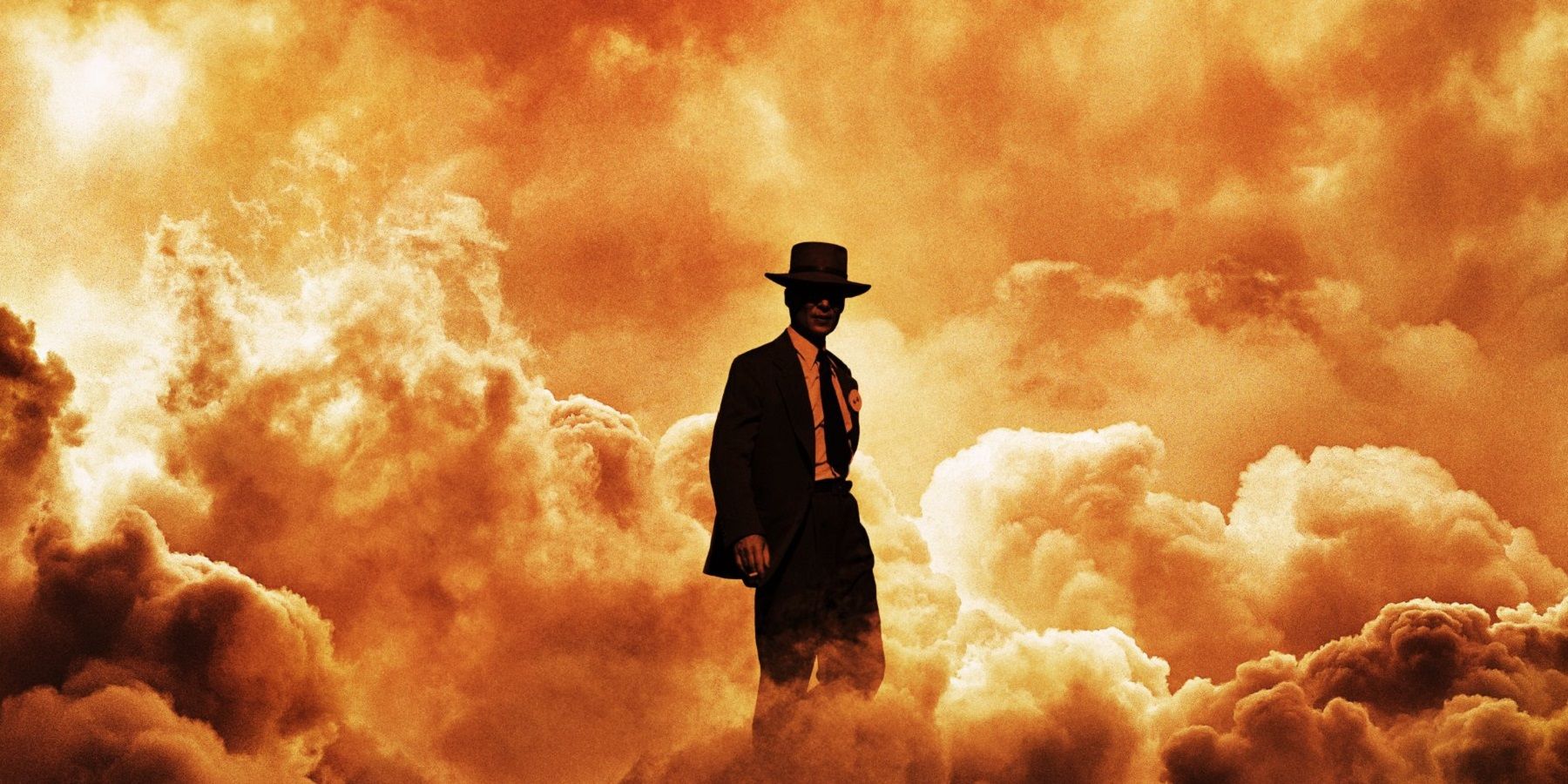
ACTION ALERT:
This Is How We Stop the Doomsday Clock
Win Without War
(August 10, 2023) — Since Oppenheimer’s release late last month, we’ve seen a groundswell of energy and activism set the stage to build a world free from the threat of nuclear war.
Now, it’s time to ensure we can keep the pressure up and go further, because the stakes are only getting higher. From the Capitol to Hollywood, we’re in the midst of an ambitious, multi-pronged, and crucially important campaign to stop a nuclear arms race to the bottom — and we need your help to make it a reality.
The Manhattan Project scientists used to wonder if an atomic bomb could destroy the world.
Now we know: Even a “small” nuclear war — deploying just three percent of the world’s nuclear arsenal — would have apocalyptic effects. Millions would be killed on impact, followed by environmental destruction, famine, and more death in the fallout.
Avoiding this nightmare scenario has been a huge part of Win Without War’s work. It’s also why we made a bold bet on Hollywood earlier this summer.
Since Oppenheimer’s release late last month, we’ve seen a groundswell of energy and activism set the stage to build a world free from the threat of nuclear war. From the Senate passing groundbreaking legislation to support communities impacted by US nuclear testing to more than 100 medical and public health journals issuing an unprecedented joint call to eliminate nuclear weapons, our bet is paying off — and that’s just the first 19 days.
It’s time to ensure we can keep the pressure up and go further, because the stakes are only getting higher.
In just a few weeks, Congress will dive into negotiations over a must-pass bill notorious for increasing the US nuclear arsenal. The good news? We’ve got a crucial wind at our backs and are laser-focused on one goal: Seizing this moment to push Congress toward disarmament and away from a doomsday scenario.

The weight of this moment is profound. Seventy-eight years ago today at 11:02 a.m. local time, the United States doubled down on a devastating strategy to detonate a second atomic bomb, this time over Nagasaki. The National WWII Museum describes the horror on the ground:
“Everything within a mile of ground zero was annihilated. Fourteen thousand homes burst into flames. People close to the blast were vaporized; those unlucky enough to be just outside that radius received horrific burns and, there and further out, radiation poisoning that would eventually kill them.”[1]
In the ensuing days and weeks, tens of thousands more people died as a result of the bombings in Nagasaki and Hiroshima.
With today’s geopolitical tensions on a hair trigger, the terrifying possibility that others could face a similar fate is far too close for comfort — because one of the biggest risks with nuclear weapons isn’t an international conflict. It’s a simple mistake.
Cole Smith, a former US Air Force nuclear missile operator, wrote last year, “there have been more near-misses than the world knows.” That includes in 1980, when an airman dropped a socket down an ICBM launch tube, piercing a hole in the fuel tank below. The resulting explosion threw the nine-megaton warhead – the most powerful single nuclear weapon in US history – into the woods.
Or in 2018, when an emergency alert system told everyone in Hawaii of an incoming ballistic missile threat and to take shelter immediately. The message said it was not a test.
We’ve escaped disaster time and again not because of deterrence, but because of LUCK — and you can’t build a foreign policy with four-leaf clovers. As the United States ramps up its nuclear weapons development, other countries are too. That only increases the risk of technological error, human miscalculation, and mutually assured destruction.

With all eyes on Oppenheimer, we have a made-in-Hollywood moment to push Congress to go all in on a world free from nuclear weapons. It’s part of a wildly ambitious, multi-pronged, and crucially important campaign to hijack the Hollywood PR machine to go as far and as fast as we can to stop a nuclear arms race to the bottom — and we need your help to make it a reality.
Every dollar counts — and directly supports our ability to advocate and mobilize grassroots activists to stop a nuclear race to the bottom. Not everyone reading will or can, but if you’re able, please consider becoming our newest sustaining donor today.
Thank you for working for peace,
Sara, Eric, Shahed, and the Win Without War team
Further Reading
“The Bombing of Nagasaki, August 9, 1945”, The National WWII Museum
Posted in accordance with Title 17, Section 107, US Code, for noncommercial, educational purposes.